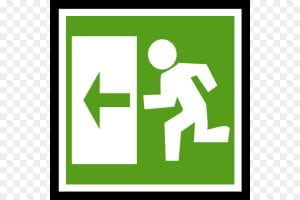 Last post we introduced you to the functions of behavior, which are escape, attention, tangible, and sensory. We will start describing these functions in more depth, starting with escape.
Last post we introduced you to the functions of behavior, which are escape, attention, tangible, and sensory. We will start describing these functions in more depth, starting with escape.
If a child always starts throwing his homework around when you give him his math assignments to get out of doing his work, this may be an escape-maintained behavior. Children know that if they act in a certain way, such as throwing a fit or leaving the homework area, they will be able to get out of the task. The child will continue to throw a fit or leave for as long as it works to escape or avoid the unpleasant task. If this is the reason for the problem behavior, changing the dynamic in place will help fix this problem.
Another example of this may be a child trying to avoid a chore at home. If you want your child to clean up their toys and fall to the floor and start screaming until you pick up the toys for them you may be dealing with escape maintained behavior.
Children often use escape if the task they need to be doing is too long, boring/easy, difficult, or nonpreferred. The purpose of these behaviors is to get out of, or escape, unwanted activities. These behaviors can also be used to avoid the activity before it starts. Some children may also try to avoid certain people, like a specific teacher or family members if that person disciplines them or gives them work to do. A final reason a child may escape is that the environment is overwhelming to them. It may be too loud or too bright for some children.
Stay tuned to find out more about escape-maintained behavior and the other functions. Our next post will be on preventative strategies for escape-maintained behavior.
 Last semester, we discussed what it means to be a BCBA, how to use embedded teaching, and how clinicians at the Husky Applied Behavior Analysis Clinic work with your children. Over the course of this semester, we will discuss how the function of behavior impacts our reactions.
Last semester, we discussed what it means to be a BCBA, how to use embedded teaching, and how clinicians at the Husky Applied Behavior Analysis Clinic work with your children. Over the course of this semester, we will discuss how the function of behavior impacts our reactions.
When children appropriately or inappropriately behavior, you may ask yourself… “Why is she biting?,” “why won’t he do his math assignments?” or “I don’t understand why he likes to rock in his chair.” In applied behavior analysis, BCBAs take a highly individualized to identify the “Why?” or the function of the behavior. Through detailed behavioral assessments, BCBAs (and clinicians at the Husky ABA clinic) can identify if these disruptive behaviors occur to one of four reasons. The child may engage in challenging behavior to get out of unpleasant tasks, activities, or situations; gain a reaction (attention) from adults, peers, or siblings; get items, activities, or snacks (tangible); or to meet a sensory need (sensory).
When we identify the WHY (or function of a disruptive behavior), BCBAs will conduct assessments that may consist of interviewing the parent, teacher, or other important individuals’ in the child’s life, observing the child in the environment in which the behavior is likely to occur, and directly testing specific situations to see if unwanted behaviors occur. Together, this information helps BCBAs learn WHY (or the function) of the behavior, and identify indivualized behavioral therapy to decrease disruptive behavior, but more importantly increase behaviors that are socially appropriate (like communication). Over the next few weeks, Husky ABA Clinicians will be reviewing each function of the disruptive behavior (escape, attention, tangible, and sensory), describe strategies that are evidence-based to prevent these behavior, and outline how to respond to this disruptive behaviors if they occur.
 Last post we introduced you to the functions of behavior, which are escape, attention, tangible, and sensory. We will start describing these functions in more depth, starting with escape.
Last post we introduced you to the functions of behavior, which are escape, attention, tangible, and sensory. We will start describing these functions in more depth, starting with escape.
